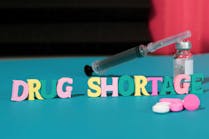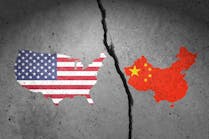Are suppliers, vendors fit for a value-based procurement future?
In the first article exploring value-based procurement (VBP), we took a healthcare provider perspective where we focused on the need for procurement functions to foster collaboration across the supply chain to address the healthcare challenges in a post-COVID-19 world. [Editor’s Note: See “Value-based procurement: What’s in it for provider supply chains?” September 2021 Healthcare Purchasing News, https://www.hpnonline.com/sourcing-logistics/article/21234509/valuebased-procurement-whats-in-it-for-provider-supply-chains.] More specifically, we advocated for simplicity over complexity, transparency over opaqueness, strategic over transactional relationships, and leadership within and outside the supply chain function intent on developing long-term, value-added partnerships with suppliers and vendors.
From the provider perspective, we suggested that “value-based” approaches are being considered across multiple jurisdictions from Europe to the Middle East as they pursue finding ways to deliver environmentally sustainable and cost-effective healthcare against a backdrop of increasing demand. We expect value-based programs of some form to be the norm going forward, and we expect there to be increasing external and internal pressure on health systems and suppliers to comply.
This month, we consider VBP from the perspective of a supplier and vendor. By definition, suppliers manufacture products and may have direct contact with customers; vendors, however, do not manufacture products but only distribute and sell products directly to customers. We draw upon our own global experiences in support of VBP programs. By way of this, we offer insights gleaned from conversations with a leading multinational medical device and technology manufacturer. We identify common issues and opportunities as it relates to manufacturers taking the lead to develop and promote value-based solutions.
Business models changing
A well-regarded notion in the arena of change management is that effectiveness and success are predicated on a “felt-need,” which is the realization that a change is necessary., If there was ever a more concrete motivator for change, it would have to be the maelstrom of activity that healthcare systems faced in 2020. The global impact and prevalence of the COVID-19 pandemic sent, and continues to send more than two years later, shock waves throughout the global supply chain. No entity was insulated. Suppliers and health systems alike must consider how their existing structures and business models will cope with a changing environment. They must also consider what change(s) is/are necessary as they replenish their stockpiles, rebuild and redeploy a depleted and exhausted workforce, and reintroduce themselves to a healthcare marketplace that has different expectations and needs as a result of COVID-19.
Preparing for the future
As we slowly begin to emerge from the fog of COVID-19, we envisage that healthcare ecosystems in 2031 will be characterized by:
• Increased demand and limited capacity – With aging populations, late-stage disease detection and diagnosis, and more complex comorbidities as result of the long-lasting impact of COVID-19, healthcare systems will continue to experience increased strain on their resources and demand for services. There is pinned up demand with an estimated reduction in use of healthcare services of up to 70% during COVID-19.
• Fewer healthcare workers – The COVID-19 pandemic exacerbated the shortage of healthcare professionals. In some regions of the world (e.g., Canada, the United Kingdom), COVID-19 exposed limitations with respect to pay, progression, reward, and migration of healthcare workers from developing countries. This resulted in a thin workforce being stretched beyond its means. Furthermore, healthcare employment rates were lower than the previous year-to-date numbers. The psychological toll COVID-19 had on healthcare workers has caused many to reconsider their current and future aspirations of being a healthcare professional.,
• Digitally transformed – With technological advances in the form of artificial intelligence (AI) systems to aid diagnosis, greater use of robotic-assisted surgery devices, and the widespread and rash adoption of telehealth solutions, healthcare delivery will look quite different in the future. Hospital-at-home programs, currently viewed as a luxury and sustained competitive advantage will be commonplace. The unanticipated shift from in-person to virtual healthcare for diagnostics, assessments, and evaluation and management is here to stay. This will require health systems to reconsider their operation model and suppliers to redesign their distribution channels in preparation for direct-to-consumer/patient arrangements.
• Increase use of day case/outpatient and minimally invasive surgery – Greater alignment and use of community-based services will be needed to support the continued focus on day cases. This is partly driven by the belief that minimally invasive surgery is a conduit for decreased postoperative complications for common procedures and overall cost reductions.
• Increased federal intervention and regulation on “Big Medtech” and Healthcare sector – Pressure to provide environmentally sustainable healthcare that removes waste from the system and acts responsibly in providing affordable healthcare continues to mount.
• Free market forces – Increased competition and challenges for healthcare providers to reduce costs demanded by payers, while also managing expectations of a more educated patient/consumer, with all stakeholders expecting improved health outcomes and lower costs.
So what does this mean for suppliers? For one, it means VBP must be a reality and baked into the way they do business with providers.
Reality-based strategic VBP for the win: As the value agenda emerges, group purchasing organizations (GPOs) are recognizing the limitations of price based practices in supporting healthcare. After all, one thing COVID-19 taught health systems and suppliers is that getting the best product price or having the best-priced product, respectively, is necessary but insufficient. This is especially true when – and if – clinicians cannot get the product when needed. It is also true even when the product is available, but it does not sufficiently meet the needs of the clinician or patient.
As a result, it is our view that the demand will transition from procurement of “products” to “solutions,” whereby consumables/devices are provided as part of a total package. Here, suppliers will be paid not for products but for procedures and outcomes – i.e., value-based procurement arrangements based on clinical evidence. Considering, the strained relationships between providers and suppliers as result of supply shortages, communication breakdowns and broken promises during the pandemic, crossing the chasm from transactional relationships to more strategic relationships needed for value-based procurement will be a daunting task. However, we believe the need and desire for greater supply chain resiliency will serve as the impetus to help providers and suppliers repair their damaged relationships.
A number of organizations have been considering value-based approaches, and we caught up with one to see how they are advocating for VBP and advancing the conversation. BD (Becton Dickinson and Company) is a global medical device company with an interest in the development of VBP across the markets they serve as a means of delivering improved healthcare outcomes and lower cost. However, one of the common challenges they have encountered is that ”Value” is ill-defined by health systems, particularly by procurers who struggle in many cases to recognize the difference between Economic Valuation versus Value (i.e., what does it cost versus what does it provide and avoid [negative effects]).
Two steps to provide value
To advance true value-based arrangements, requires commitment by both buyer and supplier or vendor to change, albeit suppliers may be in a better position to lead the way, as BD is seeking to do, by taking responsibility for demonstrating value. Our view is that this will include adopting an evidence-based approach, that clearly articulates and justifies the value proposition in terms of a measurable improvement in patient outcomes, increased efficiency and a reduction in the total cost of care. Suppliers then need to commit to work in partnership with the health system to ensure the benefits are realized.
This will require suppliers to:
Build in value – Don’t market theoretical value – In supporting existing clients looking to build value propositions for health systems, currently there is a common practice of trying to “market value out” of existing mainstream products, and we aim to offer some guidance as to the need and some steps to consider how to build value into product development.
Instead of “forcing” a solution onto a provider to address a pain point, for which the product might not be intended to address, for the sake of a “win”, providers have an opportunity to use the articulated pains point as a “demand/market pull” signal to drive their R&D. This has potential to result in a product that addresses specific needs associated with clinical, and likely financial, value for the health system, thus generating the needed sales that offset the R&D costs of the product. This type of win benefits both key stakeholders.
Contract for value – Contracting for value will increase with greater use of legal frameworks to provide assurance and incentivize performance. To date, contractual agreements have been largely simple structures based on the box standard provision of products. Transitioning to value will require suppliers to be able to “put their money where their mouth is” – but the rewards will be longer term partnership/security of business and the potential to increase profits, but not merely through gain sharing agreements.
3 steps in path forward
Change the game: One way to operationalize contracting for value is to no longer view shared risk and shared reward as mutually exclusive. This would require partners to move from a “skin in the game” to a “skins game” mindset like in golf, wherein both parties win and each does well. To do this, suppliers must strive for more balanced arrangements that encompass both shared risks and rewards. This way suppliers and providers win and lose together, rather than there almost always being one loser and one winner. This type of arrangement incentivizes both sides to work in the best interest of the other because it also benefits them.
Suppliers that initiate shared risks and rewards agreements, instead of relying on providers to proffer them, separate themselves from a competitor. This could potentially be an attractive proposition for GPOs and national aggregation entities to entertain more offerings from the given supplier. Because this approach is intended to drive cost reduction to the overall system of care, it’s not as focused on driving down the cost per unit. For GPOs, this has the potential to yield higher contract administration fees (CAFs) due to greater spend via the contract mechanism. The burden will essentially shift to the GPOs to educate their member organizations about these types of contracting mechanisms to avoid off-contract purchases that would jeopardize the ultimate goal.
Create vertical integration strategies: A possible consequence of the move to outcomes-based healthcare provision is an increased use of vertical integration through the medical device industry to provide the required skills and entrepreneurship of the SME sector to provide holistic and innovative solutions. This entails transitioning away from the provision standalone products to providing comprehensive solutions. But given a supplier’s core competency in product development, it will likely need to partner with smaller, more entrepreneurial entities to develop comprehensive solutions. An example of this is the automotive sector, in which a manufacturer’s plant is geographically surrounded by its Tier 2 and 3 suppliers. These suppliers provide materials and components based on their areas of specializations that are coupled with the core of the automobile (the product from the manufacturer) to put forth a cohesive and comprehensive solution.
Address incentive misalignment: This is not as simple as changing the reward system; it is also about revamping the culture of the sales and marketing function. Suppliers must reward and incentivize their workforce to create and deploy value for providers. Currently, suppliers incentivize personnel to focus on short-term goals (e.g., quarterly/annual sales targets) that are not intended to drive value for providers. Short-term or short-sighted incentive models put the brakes on the adoption of strategic value based and run counter to win-win relationships. Value creation for both buyers and suppliers is more likely be manifest over a 3- to 5-year horizon. Therefore, the incentive mechanisms need to be aligned to ultimate goals to ensure sales personnel are motivated to work in the best interest of providers. In the end, suppliers and their personnel will be rewarded with greater business and revenue security, while providers experience the product performance needed to thwart untoward healthcare outcomes.
As the world hopefully begins to transition to a new era of healthcare post COVID-19, supply chains and all actors involved will need to have the agility to adapt to a new normal. The recommendations here should provide some insight into the challenges and opportunities that remain for suppliers as they take the lead to work with health systems to establish value-based procurement frameworks with mutual objectives for long-term win-win relations that yield high-quality outcomes and sustainable cost-effective care for all citizens.
References:
1. Plant, R. (1989). Practical ideas for managing change and making it stick. Industrial and Commercial Training.
2. Burnes, B. (2004). Kurt Lewin and the planned approach to change: a re-appraisal. Journal of Management Studies, 41(6), 977-1002.
3. Cutler, D. (2020, April). How will COVID-19 affect the health care economy?. In JAMA Health Forum (Vol. 1, No. 4, pp. e200419-e200419). American Medical Association.
4. McNamara, D. (2021, April). About 1 in 5 Clinicians Considers Quitting Due to Pandemic: Survey. Medscape Medical News.
5. Vivian Health. (2021, May). One-Year In: What’s Next for America’s Healthcare Workers. Retrieved at https://www.vivian.com/community/announcements/one-year-in-whats-next-for-americas-healthcare-workers/
6. Xu, T., Hutfless, S. M., Cooper, M. A., Zhou, M., Massie, A. B., & Makary, M. A. (2015). Hospital cost implications of increased use of minimally invasive surgery. JAMA Surgery, 150(5), 489-490.
7. Dyer, B. (2021). How to establish healthier vendor relationships during and after the pandemic. Healthcare Purchasing News, February 16. Retrieved at https://www.hpnonline.com/sourcing-logistics/blog/21210429/how-to-establish-healthier-vendor-relationships-during-and-after-the-pandemic.
8. Alicke, K., Gupta, R., and Trautwein, V. (2020). Resetting supply chains for the next normal. July 21. Retrieved at https://www.mckinsey.com/business-functions/operations/our-insights/resetting-supply-chains-for-the-next-normal.
Brian Mangan serves as Director, Brian Mangan Associates, Liverpool, UK, Fellow of the Chartered Institute of Procurement and Supply and Executive Board Member for the newly formed European Association of Value-Based Health Care.
Randy V. Bradley, Ph.D., serves as Associate Professor of Information Systems and Supply Chain Management, University of Tennessee, and Executive Vice President, Digital Transformation for Life Sciences, Bio Supply Management Alliance, Knoxville, TN. Bradley earned the 2020 Dean S. Ammer Award for Healthcare Supply Chain Performance Excellence by Bellwether League Foundation’s Hall of Fame for Healthcare Supply Chain Leadership.
Brian Mangan
Brian Mangan serves as Director, Brian Mangan Associates, Liverpool, UK.
Randy V. Bradley
Randy V. Bradley, Ph.D., serves as Associate Professor of Information Systems and Supply Chain Management, University of Tennessee, and Executive Vice President, Digital Transformation for Life Sciences, Bio Supply Management Alliance, Knoxville, TN. Bradley earned the 2020 Dean S. Ammer Award for Healthcare Supply Chain Performance Excellence by Bellwether League Foundation’s Hall of Fame for Healthcare Supply Chain Leadership.





